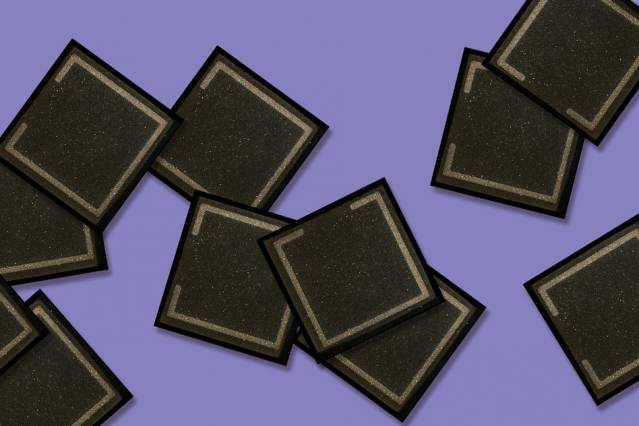A team at Stanford and MIT has devised a novel configuration that combines silicon – the leading solar cell semiconductor – and perovskite – a cheap mineral, only recently exploited for converting solar energy – to form two different layers of sunlight-absorbing material in order to harness energy across a wider spectrum. While performance at this stage is not impressive (it’s equally as good or bad as conventional single-layer silicon cells), researchers believe they have methods at their disposal that could double efficiency. If that were to happen, than these could be the cheap, but efficient solar cells we’ve all been waiting for.

Image: Felice Frankel
Perovskite is a calcium titanium oxide mineral composed of calcium titanate (CaTiO3). The mineral has received much attention in recent years as artificial perovskite crystals have increasingly been used in solar cells. Perovskite tech has seen 400 percent growth in solar conversion efficiency in less than five years. If initially we heard about clumsy perovskite cells with a rated efficiency of only 3.8%, there are now reports of conversions closed to 19%. Definitely one to watch for, this perovskite.
This is what the researchers thought as well. They added a semi-transparent perovskite layer on top of a silicon one. Since different materials absorb different light frequencies, combining the two theoretically helps you harvest more electricity. The team first did this last year, but in a tandem configuration in which the two layers were stacked, but each had its own separate electrical connection. Now, the configuration connects the two together under the same circuit.
It’s much simpler to install and make this way, but there are some important challenges to keep in mind. The two layers were initially wired separately for good reason: the current produced is limited by the capacity of the lesser of the two layers. MIT associate professor of mechanical engineering Tonio Buonassisi offers an analogy. Imagine a flow of water through two non-identical pipes. At one point, the volume of water that may pass through the stacked pipes is limited by the narrowest one. A chain is only as strong as its weakest link, in other words.
This is why the only currently report a modest efficiency of 13.7 percent, but Buonassisi claims his team has identified low-cost methods to up this to 30 percent. This would involve matching the two output currents as closely as possible, according to the paper published in the journal Applied Physics Letters. Since it’s the first time perovskite and silicon have been combined in this configuration, there’s reason to believe there’s much room for improvement.






